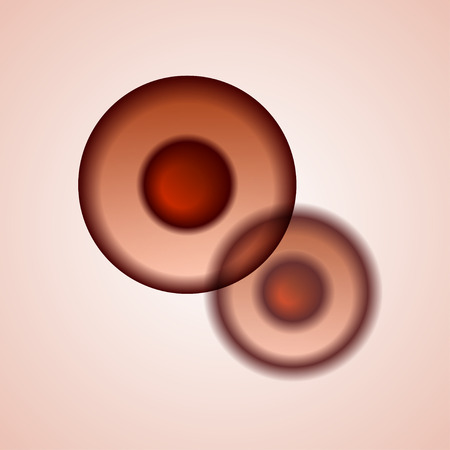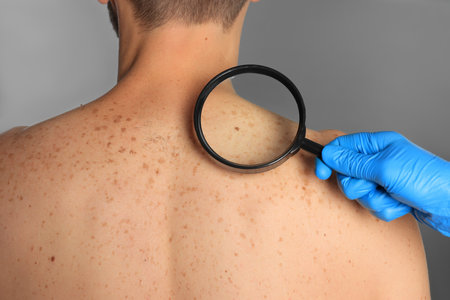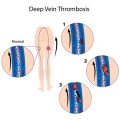Introduction to Vascular Lesions
Vascular lesions are a common dermatological concern, encompassing a broad spectrum of conditions involving abnormal or visible blood vessels in the skin. These may present as birthmarks, spider veins, port-wine stains, or rosacea-related redness. In the UK, vascular lesions affect individuals across all age groups and skin types, with studies suggesting that up to 30% of adults experience some form of vascular irregularity during their lifetime. The reasons people seek treatment are varied: while some are motivated by cosmetic concerns—such as self-consciousness about prominent facial veins—others pursue intervention to alleviate physical discomfort or prevent potential complications. With advances in medical aesthetics and growing awareness among the British public, laser therapy has become an increasingly popular option for managing these vascular conditions safely and effectively.
Principles of Laser Technology in Dermatology
Understanding the science behind laser treatments for vascular lesions begins with the principle of selective photothermolysis, a cornerstone in dermatological laser technology. This concept refers to the precise targeting of specific chromophores (colour-bearing targets) within the skin using carefully chosen wavelengths of laser light. In the case of vascular lesions, the primary chromophore is oxyhaemoglobin, which is present in blood vessels.
Selective Photothermolysis Explained
Selectively delivering laser energy allows practitioners to heat and destroy abnormal blood vessels without damaging surrounding healthy tissue. The success of this technique relies on three key factors: the wavelength of the laser, pulse duration, and fluence (energy delivered per unit area). By matching these parameters to the absorption characteristics of oxyhaemoglobin, clinicians can achieve optimal results with minimal side effects.
Wavelengths Commonly Used for Vascular Lesions
| Laser Type | Wavelength (nm) | Main Clinical Use |
|---|---|---|
| Pulsed Dye Laser (PDL) | 585–595 | Port-wine stains, spider naevi, rosacea |
| Nd:YAG Laser | 1064 | Larger/deeper vascular lesions, leg veins |
| KTP Laser | 532 | Superficial telangiectasia, facial redness |
The British Perspective on Safety and Efficacy
In UK clinical practice, safety protocols are paramount. Treatments are tailored to individual skin types and lesion characteristics, guided by National Institute for Health and Care Excellence (NICE) recommendations. The scientific understanding underpinning these procedures ensures that patients receive effective care with a strong emphasis on minimising risks and achieving natural-looking outcomes. This evidence-based approach reflects the high standards expected in British dermatology clinics.

3. How Laser Treatments Target Vascular Lesions
Laser treatments for vascular lesions are rooted in a precise scientific mechanism that selectively targets blood vessels beneath the skin without harming the surrounding tissue. At the heart of this process is a principle known as selective photothermolysis. This involves directing specific wavelengths of laser light to penetrate the skin and be absorbed by haemoglobin, the molecule responsible for transporting oxygen in red blood cells. By tailoring the wavelength and pulse duration, practitioners can ensure that only the targeted vascular lesion absorbs sufficient energy to cause controlled thermal damage.
The absorbed laser energy heats up the blood within the vessel, causing coagulation and subsequent destruction of the vessel wall. Over time, the body’s natural healing processes clear away these treated vessels, resulting in a visible reduction or complete removal of the lesion. What makes this approach particularly effective is its precision—the laser’s parameters are carefully chosen based on the size, depth, and type of lesion being treated. For example, pulsed dye lasers and Nd:YAG lasers are commonly used in UK clinics due to their proven efficacy and safety profiles for a range of vascular conditions.
This targeted methodology minimises collateral damage to healthy skin structures and reduces downtime compared to traditional surgical methods. Furthermore, advanced cooling systems integrated into modern laser devices help protect the epidermis during treatment, enhancing patient comfort and reducing the risk of side effects such as blistering or pigmentation changes. As a result, laser therapy has become a preferred choice across Britain for treating spider veins, port-wine stains, and other vascular irregularities with reliable outcomes and high patient satisfaction.
4. Types of Lasers Used in the UK
The field of laser treatments for vascular lesions has advanced significantly, with British clinics now offering a selection of specialised laser technologies tailored to different types and depths of vascular concerns. Understanding the types of lasers used is key to appreciating how these procedures achieve optimal results with safety and precision.
Pulsed Dye Lasers (PDL)
Pulsed dye lasers are among the most established options in the UK for treating superficial vascular lesions such as spider veins, port-wine stains, and certain birthmarks. PDL devices emit a concentrated beam of yellow light that specifically targets oxyhaemoglobin within blood vessels. This selective absorption causes thermal coagulation, effectively collapsing the targeted vessel while sparing surrounding tissues—making it especially suitable for sensitive facial areas commonly treated in British dermatology practices.
Nd:YAG Lasers
The Neodymium-doped Yttrium Aluminium Garnet (Nd:YAG) laser operates at a longer wavelength, allowing for deeper penetration into the skin. This makes it highly effective for treating larger or deeper vascular structures, such as leg veins or blue facial veins, which may be less responsive to shorter-wavelength lasers. Nd:YAG’s versatility is prized in UK clinics for its ability to manage diverse patient needs across varying skin tones—a key consideration in multicultural urban centres like London, Birmingham, and Manchester.
Other Laser Technologies
While PDL and Nd:YAG are the mainstays, other laser systems such as KTP (Potassium Titanyl Phosphate) lasers and IPL (Intense Pulsed Light) devices are also available. KTP lasers emit green light and are often used for small, superficial blood vessels, while IPL technology offers broad-spectrum light suited to diffuse redness and mild vascular irregularities. Each technology presents distinct benefits and limitations based on lesion type, depth, and patient skin characteristics.
Comparison Table: Common Laser Devices for Vascular Lesions in UK Clinics
| Laser Type | Wavelength | Best For | Advantages | Considerations |
|---|---|---|---|---|
| Pulsed Dye Laser (PDL) | 585–595 nm | Superficial lesions (e.g., port-wine stains) | High precision; minimal damage to surrounding tissue; proven track record in UK practice | Limited depth; potential temporary bruising |
| Nd:YAG Laser | 1064 nm | Deeper/larger vessels (e.g., leg veins) | Deeper penetration; effective across diverse skin tones; versatile applications | Mild discomfort; risk of pigmentation changes if not correctly applied |
| KTP Laser | 532 nm | Tiny facial vessels; redness | Excellent for fine vessels; quick treatment times | Less suitable for deeper veins; possible post-treatment redness |
| IPL Device | Broad spectrum (500–1200 nm) | Mild vascular irregularities; diffuse redness | No downtime; treats larger areas efficiently | Multiple sessions required; less precise than true lasers |
Summary of Clinical Choices in the UK Context
The choice of laser device in British clinics is influenced by lesion characteristics, patient skin type, and practitioner expertise. The NHS and private dermatology practices alike emphasise evidence-based protocols and rigorous safety standards when selecting the most suitable technology. As laser platforms continue to evolve, patients benefit from increasingly personalised treatment options—reflecting both scientific progress and the diverse needs of the UK population.
5. Treatment Procedure and Patient Experience
For patients in the UK considering laser treatment for vascular lesions, understanding what to expect during and after the procedure is crucial for peace of mind and optimal results. The typical treatment process begins with a thorough consultation, where a qualified dermatologist or aesthetic practitioner assesses the patient’s medical history, skin type, and specific vascular concerns. During this stage, practitioners discuss realistic outcomes and address any questions regarding the technology, safety protocols, and expected recovery.
On the day of the procedure, local clinical practices prioritise patient comfort and safety. Patients are asked to remove any makeup or skincare products from the treatment area. Protective eyewear is provided to shield the eyes from laser exposure—a standard safety measure in accordance with UK clinical guidelines. Most vascular laser treatments use cooling devices or topical anaesthetic creams to minimise discomfort, making the procedure generally well-tolerated. The sensation is often described as a mild snapping or stinging feeling against the skin, but sessions are typically quick and manageable.
Immediately following treatment, patients may experience mild redness, swelling, or a warm sensation—common reactions that usually subside within several hours to a few days. UK clinics emphasise proper aftercare to ensure swift recovery and optimal results. This includes avoiding direct sun exposure, using high-factor SPF as recommended by practitioners, and applying gentle moisturisers to support skin healing. Patients are also advised to avoid strenuous exercise, hot baths, or saunas for at least 24 hours post-treatment.
Pain management is handled proactively in most UK clinics. Should any discomfort persist after the session, over-the-counter pain relief such as paracetamol can be used; however, aspirin-based medications are generally avoided due to their potential to increase bruising. Follow-up appointments are often scheduled to monitor progress and determine if additional sessions are required based on individual response and lesion characteristics.
The emphasis on patient education, evidence-based protocols, and stringent safety measures reflects the high standards upheld across British dermatology and aesthetic medicine. Ultimately, while minor side effects are possible, serious complications are rare when treatments are performed by certified professionals in regulated UK clinics. This comprehensive approach ensures patients feel supported throughout their journey—from initial consultation through aftercare—maximising both safety and satisfaction.
6. Efficacy, Risks, and Emerging Trends
Efficacy of Laser Treatments for Vascular Lesions
Recent clinical evidence from the UK and abroad consistently demonstrates that laser treatments are highly effective in addressing a range of vascular lesions, including spider veins, port-wine stains, and haemangiomas. The precision with which lasers target haemoglobin allows for selective destruction of abnormal blood vessels without significantly affecting surrounding tissues. Numerous studies report clearance rates exceeding 70-80% after a series of sessions, especially when using advanced devices such as pulsed dye lasers (PDL) and Nd:YAG lasers. Patient satisfaction is generally high, particularly when treatment protocols are tailored to individual skin types and lesion characteristics—an approach now standard across British dermatology clinics.
Risks and Side Effects: What Patients Should Know
While laser therapy is widely regarded as safe, it is not entirely without risks. Common side effects include temporary redness, swelling, mild discomfort, and occasionally bruising at the treatment site. More rarely, patients may experience blistering or changes in skin pigmentation—particularly those with darker skin tones or excessive sun exposure post-procedure. UK guidelines emphasise practitioner training and patient assessment to mitigate these risks. It is also essential for patients to follow post-treatment care advice meticulously to ensure optimal outcomes and minimise adverse effects.
Emerging Trends and Innovations in the UK
The field of laser dermatology in the UK is rapidly advancing, with several innovations shaping the future landscape. Recent developments include the integration of cooling technologies to enhance patient comfort and reduce downtime, as well as more precise wavelength modulation for targeting deeper or more complex lesions. There is growing interest in combining laser therapies with adjunctive treatments—such as topical agents or light-based modalities—to boost efficacy further. Additionally, artificial intelligence is beginning to play a role in lesion assessment and treatment planning, promising even greater personalisation and safety.
What’s Next?
Looking ahead, ongoing research within the NHS and private sector focuses on refining laser parameters for challenging cases—like resistant port-wine stains—and expanding access to advanced care across the UK. As public awareness grows and technology continues to evolve, laser treatments are set to become even safer, more efficient, and accessible for individuals seeking solutions for vascular lesions.

